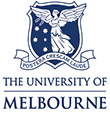Combination antiretroviral therapy and MCL-1 inhibition mitigate HTLV-1 infection in vivo
Authors:
- Cooney, James P.
- Hirons, Ashley
- Jansz, Natasha
- Allison, Cody C.
- Hickey, Peter
- Teh, Charis E.
- Tan, Tania
- Dagley, Laura F.
- Yousef, Jumana
- Yurick, David
- Khoury, Georges
- Preston, Simon P.
- Arandjelovic, Philip
- Davidson, Kathryn C.
- Williams, Lewis J.
- Bader, Stefanie M.
- Wang, Le
- Bhandari, Reet
- Mackiewicz, Liana
- Dayton, Merle
- Clow, William
- Faulkner, Geoffrey J.
- Gray, Daniel H.
- Einsiedel, Lloyd
- Purcell, Damian F.J.
- Doerflinger, Marcel
- Pellegrini, Marc
Details:
Cell, Volume 188, Issue 18, 2025-09-04
Article Link: Click here
This study investigated preventative and therapeutic agents against human T cell lymphotropic virus type-1 subtype-C (HTLV-1c) infection. We established and characterized a humanized mouse model of HTLV-1c infection and identified that HTLV-1c disease appears slightly more aggressive than the prevalent HTLV-1 subtype-A (HTLV-1a), which may underpin increased risk for infection-associated pulmonary complications in HTLV-1c. Combination antiretroviral therapy with tenofovir and dolutegravir at clinically relevant doses significantly reduced HTLV-1c transmission and disease progression in vivo. Single-cell RNA sequencing (scRNA-seq) and intracellular flow cytometry identified that HTLV-1c infection leads to dysregulated intrinsic apoptosis in infected cells in vivo. Pharmacological inhibition using BH3 mimetic compounds against MCL-1, but not BCL-2, BCL-XL, or BCL-w, killed HTLV-1c-infected cells in vitro and in vivo and significantly delayed disease progression when combined with tenofovir and dolutegravir in mice. Our data suggest that combination antiretroviral therapy with MCL-1 antagonism may represent an effective, clinically relevant, and potentially curative strategy against HTLV-1c.


